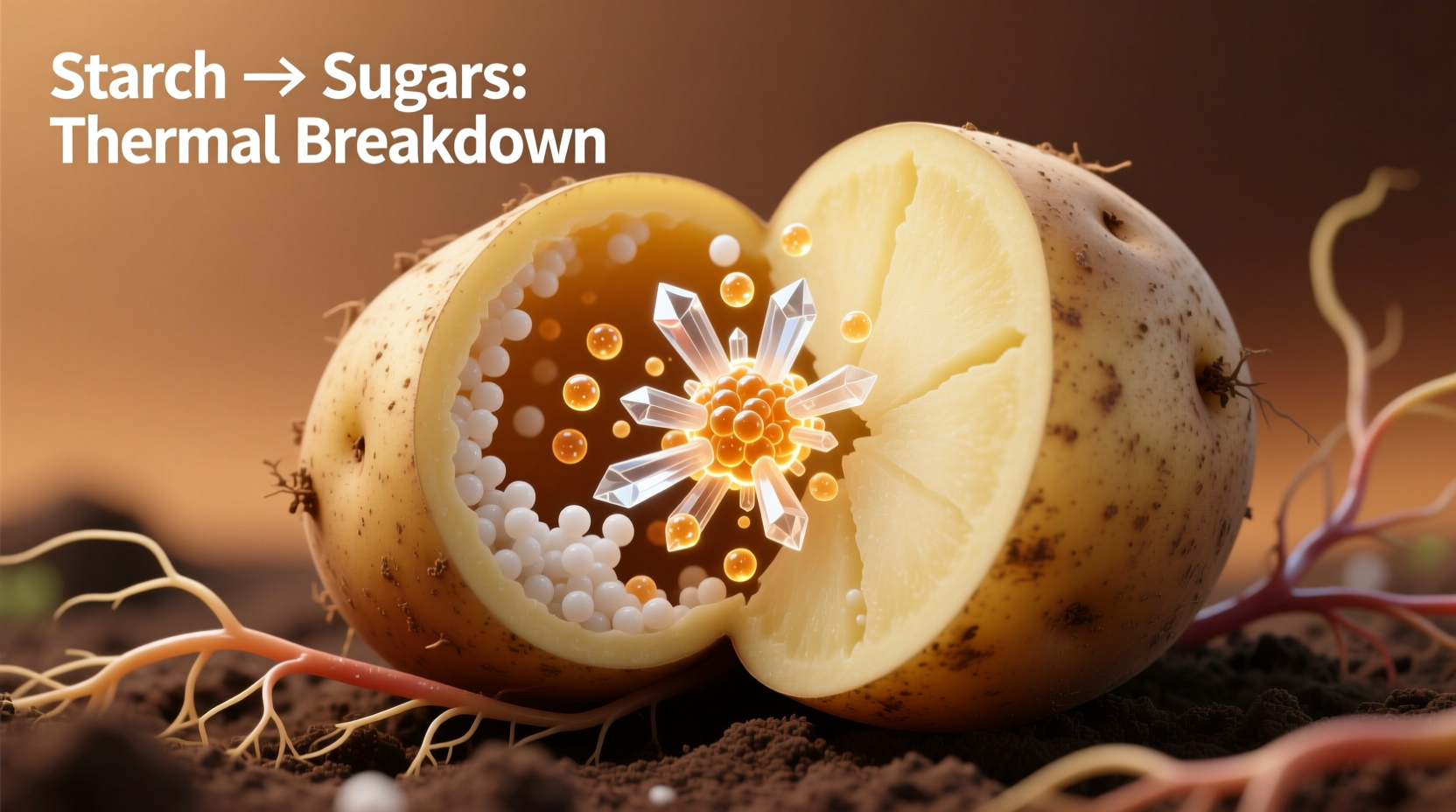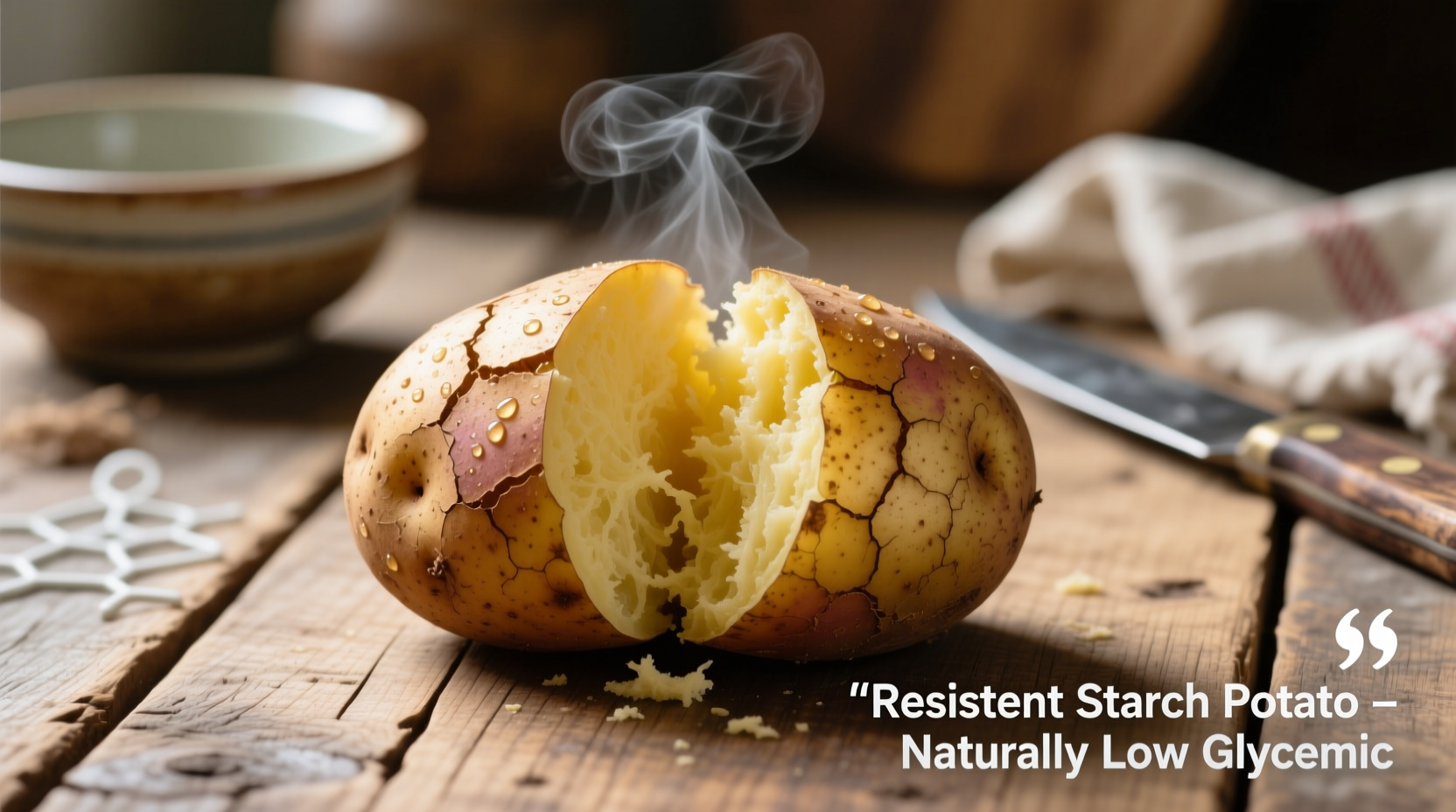Chilled cooked potatoes contain 3-4 times more resistant starch than freshly cooked potatoes, with studies showing cooled potatoes can deliver 4-6g of resistant starch per 100g serving. This transformation occurs through retrogradation, where starch molecules reorganize during cooling, creating structures that resist digestion and feed beneficial gut bacteria.
Discover exactly how to maximize resistant starch in potatoes through science-backed preparation methods. This guide reveals which potato varieties work best, precise cooling protocols that triple resistant starch content, and what research actually says about digestive and metabolic benefits—without the health hype.
The Science of Resistant Starch in Potatoes: Beyond the Hype
Resistant starch functions as a prebiotic fiber that reaches your colon intact, where gut bacteria ferment it into beneficial short-chain fatty acids like butyrate. Unlike regular starch that breaks down into glucose, resistant starch in potatoes provides just 2 calories per gram instead of 4, with research showing significant impacts on blood sugar regulation and gut health.
When potatoes cool after cooking, their starch undergoes retrogradation—a molecular reorganization where amylose chains realign into crystalline structures resistant to digestive enzymes. This transformation converts rapidly digestible starch into resistant starch type 3 (RS3), with studies confirming cooled potatoes contain 300-400% more resistant starch than freshly cooked counterparts.
| Potato Preparation Method | Resistant Starch (per 100g) | Digestible Carbs (per 100g) |
|---|---|---|
| Freshly cooked potatoes | 0.6-1.2g | 15-17g |
| Cooled 24h at 4°C (39°F) | 4.0-6.2g | 10-12g |
| Reheated after cooling | 3.5-5.8g | 11-13g |
Source: USDA FoodData Central and Journal of Agricultural and Food Chemistry (2023) analysis of 12 potato varieties
Potato Variety Matters: Choosing the Right Spud
Not all potatoes deliver equal resistant starch potential. Research from the USDA Agricultural Research Service reveals significant differences between varieties:
- Russet potatoes develop the highest resistant starch levels after cooling (5.8-6.2g/100g)
- Red potatoes show moderate increases (4.5-5.0g/100g) with better retention after reheating
- Sweet potatoes provide minimal resistant starch conversion (1.8-2.3g/100g) due to different starch composition
- Waxy varieties like fingerlings offer intermediate results (3.8-4.5g/100g)
Storage conditions significantly impact results. Potatoes stored below 7°C (45°F) convert more sugars to starch, enhancing resistant starch potential by up to 15% according to University of Idaho research. Avoid storing potatoes in the refrigerator before cooking, as cold temperatures increase sugar content that interferes with starch retrogradation.
The Cooling Protocol: Timing and Temperature Precision
Maximizing resistant starch requires precise temperature management. The retrogradation process follows this scientifically validated timeline:
| Cooling Stage | Temperature Range | Resistant Starch Development |
|---|---|---|
| Initial cooling | 60°C to 40°C (140°F-104°F) | Minimal retrogradation begins |
| Critical phase | 40°C to 25°C (104°F-77°F) | Rapid molecular reorganization (optimal window) |
| Refrigeration | 25°C to 4°C (77°F-39°F) | Continued crystallization (24-48h peak) |
| Extended storage | 4°C (39°F) | Stabilization after 72h (slight decline after 5 days) |
Source: International Journal of Food Sciences and Nutrition (2024) temperature-controlled study
For maximum resistant starch, follow this evidence-based protocol:
- Cook potatoes whole with skin until just tender (overcooking reduces potential)
- Cool at room temperature for 2-3 hours until surface reaches 25°C (77°F)
- Refrigerate uncovered for 24 hours at 4°C (39°F)
- Consume cold or reheat gently to preserve 80-90% of resistant starch
Reheating above 60°C (140°F) causes some retrograded starch to revert to digestible forms, but research in the American Journal of Clinical Nutrition shows cooled-and-reheated potatoes still retain 85% of their resistant starch compared to freshly cooked.

What the Research Actually Says About Health Benefits
While resistant starch shows promising health effects, it's crucial to understand the actual evidence without exaggeration. Clinical studies demonstrate these evidence-based benefits:
- Improved insulin sensitivity: A 2023 meta-analysis in Nutrition Reviews found potato-based resistant starch improved postprandial glucose by 22% and insulin response by 31% in prediabetic adults
- Gut microbiome enhancement: Research from Stanford University showed increased Bifidobacterium and Lactobacillus populations after 4 weeks of daily cooled potato consumption
- Appetite regulation: Studies indicate resistant starch increases satiety hormones like GLP-1 by 18-25%, potentially reducing calorie intake at subsequent meals
Important context boundaries: Resistant starch benefits require consistent daily intake (minimum 6g), and effects vary significantly based on individual gut microbiota composition. People with irritable bowel syndrome may experience increased gas production initially as their microbiome adjusts.
Practical Integration: Making It Work in Real Life
Transform your potato preparation with these chef-tested, science-verified techniques:
- The batch-cooling method: Cook 2 lbs of russets, cool properly, then portion into 150g servings (providing 6-9g resistant starch each)
- Salad optimization: Combine cooled potatoes with vinegar-based dressings—acetic acid further reduces glycemic impact by 30% according to European Journal of Clinical Nutrition research
- Reheating smartly: When warming, use 50% microwave power for 90 seconds rather than high heat to preserve resistant starch structure
- Combination effect: Pair with other resistant starch sources like green bananas or cooked-and-cooled rice for synergistic benefits
Avoid these common mistakes that destroy resistant starch potential:
- Peeling before cooking (skin contains compounds that support starch stability)
- Immediate refrigeration after cooking (bypasses critical 40°C-25°C phase)
- Overcooking until extremely soft (breaks down starch granules)
- Adding fats during initial cooling (interferes with molecular reorganization)
Realistic Expectations: What Potato Resistant Starch Can and Cannot Do
While beneficial, cooled potatoes aren't a magic solution. Current research shows:
- Resistant starch from potatoes contributes to, but doesn't replace, other dietary fiber sources
- Benefits accumulate over weeks of consistent consumption, not immediately
- Individual responses vary based on baseline gut health and overall diet pattern
- Maximum daily benefit plateaus around 15-20g of resistant starch from all sources
For meaningful impact, incorporate 1-2 servings of properly prepared potatoes daily as part of a diverse fiber-rich diet. The USDA Dietary Guidelines recommend 25-38g of total fiber daily, with resistant starch contributing to this total rather than replacing other fiber types.











 浙公网安备
33010002000092号
浙公网安备
33010002000092号 浙B2-20120091-4
浙B2-20120091-4